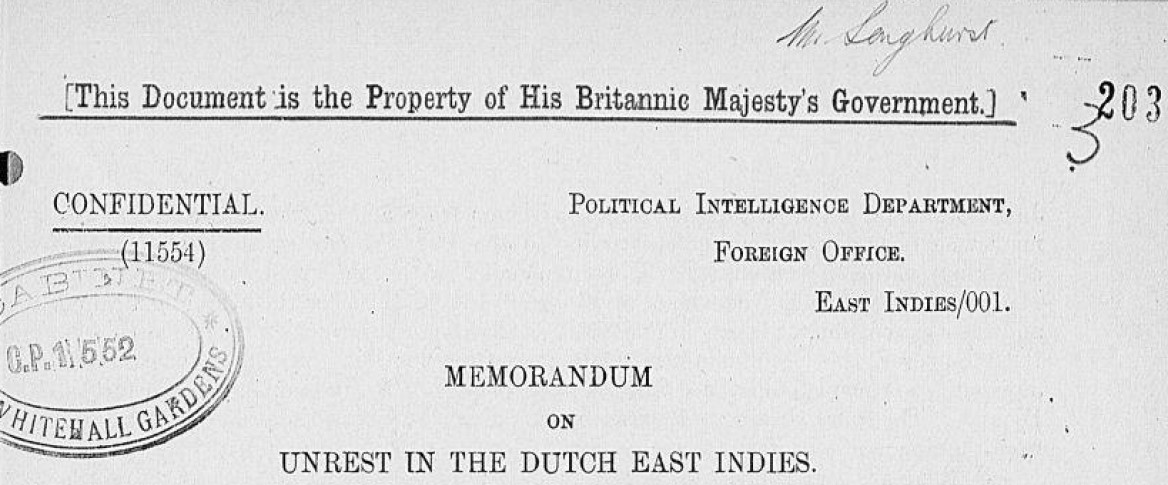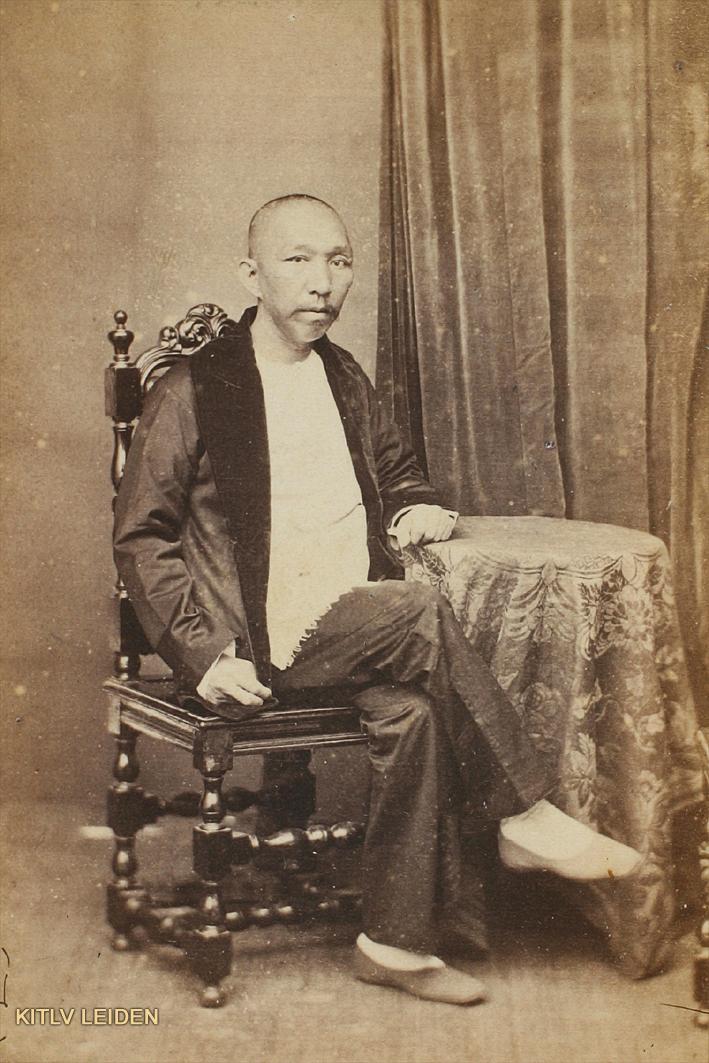I was looking around in the database of the “cabinet papers” digitized by the National Archives of the UK, when I came across a document from 18 June 1920 entitled “Memorandum on Unrest in the Dutch East Indies.”

This memorandum was submitted to the government by the Political Intelligence Department of the Foreign Office, and it pointed to the many changes that were taking place in the Dutch East Indies in the aftermath of World War I, particularly on the island of Java.
The reported noted that a decade earlier, Java had been “a negligible factor in the world’s politics,” but that now it was “an important and disturbing element in the tide of Asiatic unrest, which is of vital importance to the British Empire, and will be one of the most serious problems of the immediate future.”
The memorandum then listed the following “disquieting elements” that were present on Java:

1. An immense native population, living close to the starvation line and seething with discontent.

2. A strong Arab influence, a section of which is pro-Turkish and anti-British. The Arabs of the Dutch East Indies support the Arabs of the Hadramaut (South Arabia), and are of some importance in the Mohammedan world. The native population of Java is almost entirely Mahommedan, and the Arabs have considerable influence.

3. A restless intelligentzia among the natives and half-castes, whose avowed policy is independence for the Indies.

4. A nervous government which cannot trust its own army and navy, and whose policy of conciliation towards the natives is viewed with alarm by the Dutch colonists.

5. A large and rich Chinese colony.

6. The advent of the Japanese, who have acquired considerable interests in the islands, who are suspected of intriguing with native discontent, and are believed to be coveting the islands for themselves.
And as if all of this was not scary enough, there was also. . . 7. A strong German influence!!
This memorandum paints a very alarming picture, and yet the Dutch maintained control of these “disquieting elements” for over two more decades.
What I find interesting is that ultimately all of these “disquieting elements” contributed to ending colonial rule in one way or another. In 1920, however, it was impossible to predict how that would happen, but this report does a good job of identifying where many of the “threats” to colonial rule were.

The above pictures come from a wonderful online archive called “The Dutch East Indies in Photographs, 1660-1940” that is maintained by the KITLV (the acronym for Koninklijk Instituut voor Taal-, Land- en Volkenkunde) in the Netherlands.
The pages for these pictures can be found by clicking on the following terms for each picture: two opium smokers, Arab man, Javanese regent, Dutch man, Chinese man and Japanese woman.

This Post Has One Comment
Thank you for posting this, a valuable finding!